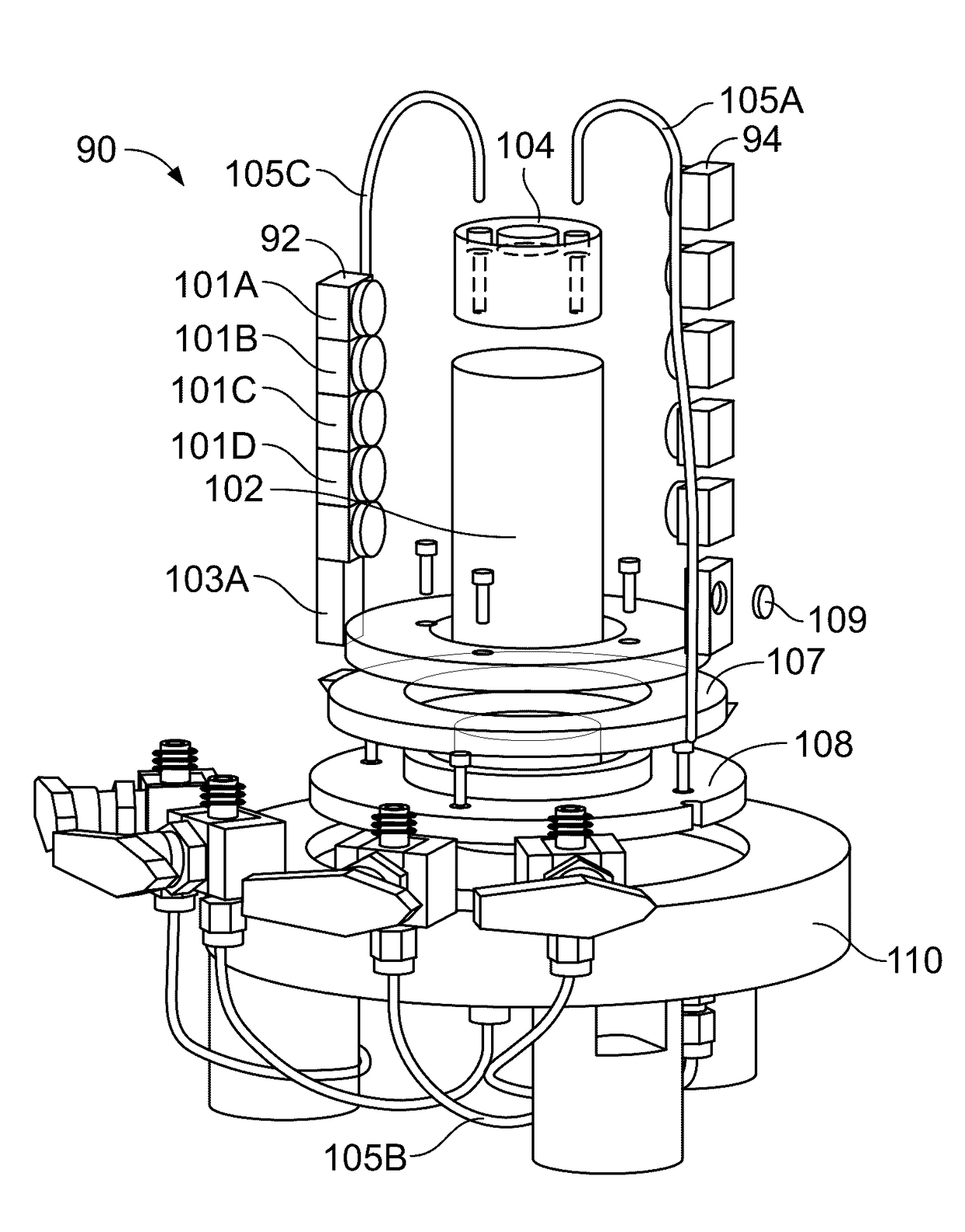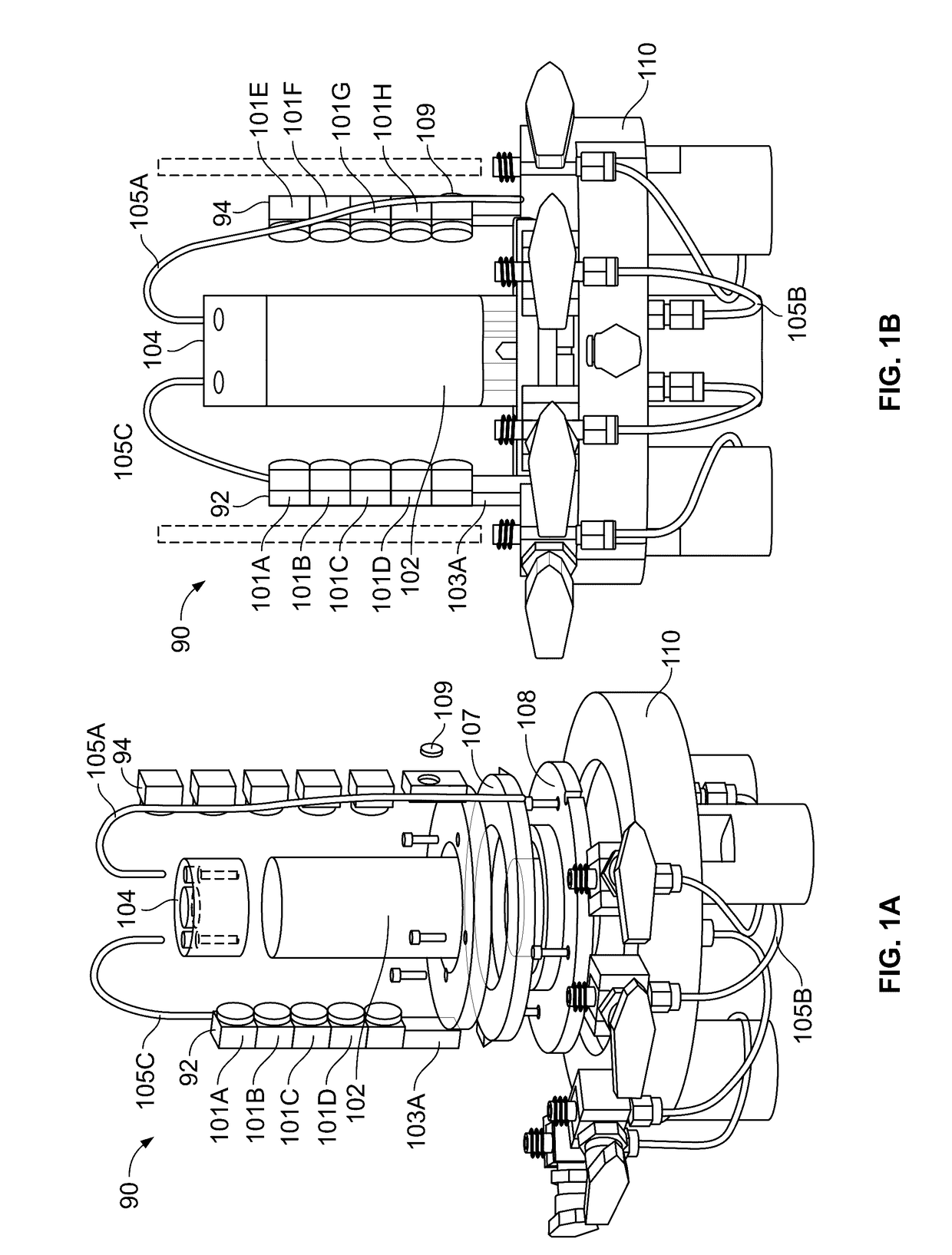Pressurized Fluid-Submerged, Internal, Close-Range Photogrammetry System for Laboratory Testing
a technology of pressure-submerged fluid and photogrammetry system, which is applied in the direction of liquid/fluent solid measurement, television system, instruments, etc., can solve the problems of refraction of light through the lens, the optical elements of camera equipment have not been addressed in detail, and the cost of the camera surrounding the testing apparatus is high
- Summary
- Abstract
- Description
- Claims
- Application Information
AI Technical Summary
Benefits of technology
Problems solved by technology
Method used
Image
Examples
Embodiment Construction
[0040]Detailed embodiments of the present invention are disclosed herein; however, it is to be understood that the disclosed embodiments are merely exemplary of the invention, which may be embodied in various forms. Therefore, specific structural and functional details disclosed herein are not to be interpreted as limiting, but merely as a representative basis for teaching one skilled in the art to variously employ the present invention in virtually any appropriately detailed method, structure or system. Further, the terms and phrases used herein are not intended to be limiting, but rather to provide an understandable description of the invention.
[0041]As shown in FIG. 1, in one embodiment, the present invention provides an imaging system 90 configured for analyzing a sample, such as a soil sample 102, that may be located in transparent container 104. Container 104 may include drain lines 105A-105C and is, in turn, located in a sealed container known as a triaxial cell (not shown).
[...
PUM
 Login to View More
Login to View More Abstract
Description
Claims
Application Information
 Login to View More
Login to View More - R&D
- Intellectual Property
- Life Sciences
- Materials
- Tech Scout
- Unparalleled Data Quality
- Higher Quality Content
- 60% Fewer Hallucinations
Browse by: Latest US Patents, China's latest patents, Technical Efficacy Thesaurus, Application Domain, Technology Topic, Popular Technical Reports.
© 2025 PatSnap. All rights reserved.Legal|Privacy policy|Modern Slavery Act Transparency Statement|Sitemap|About US| Contact US: help@patsnap.com



